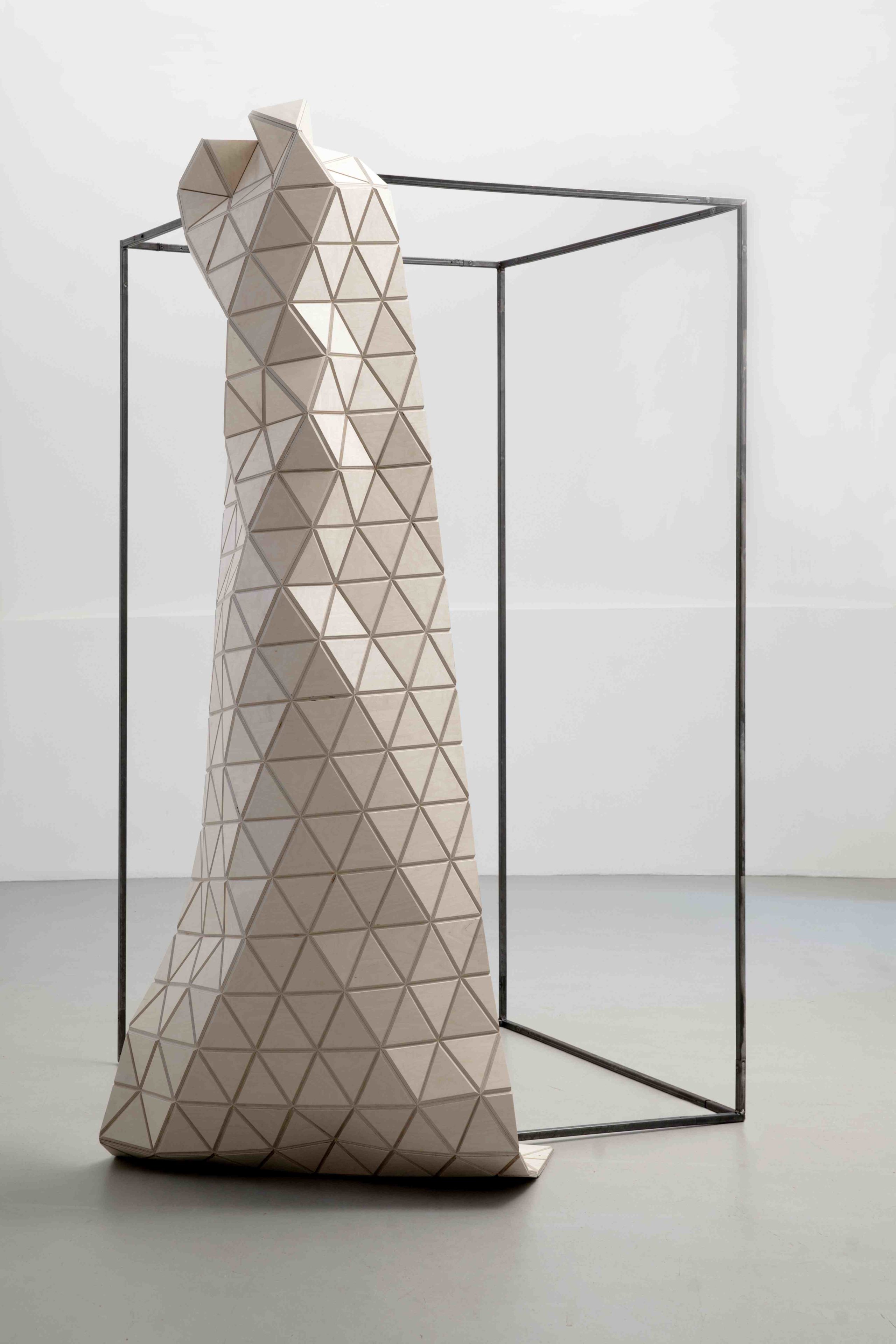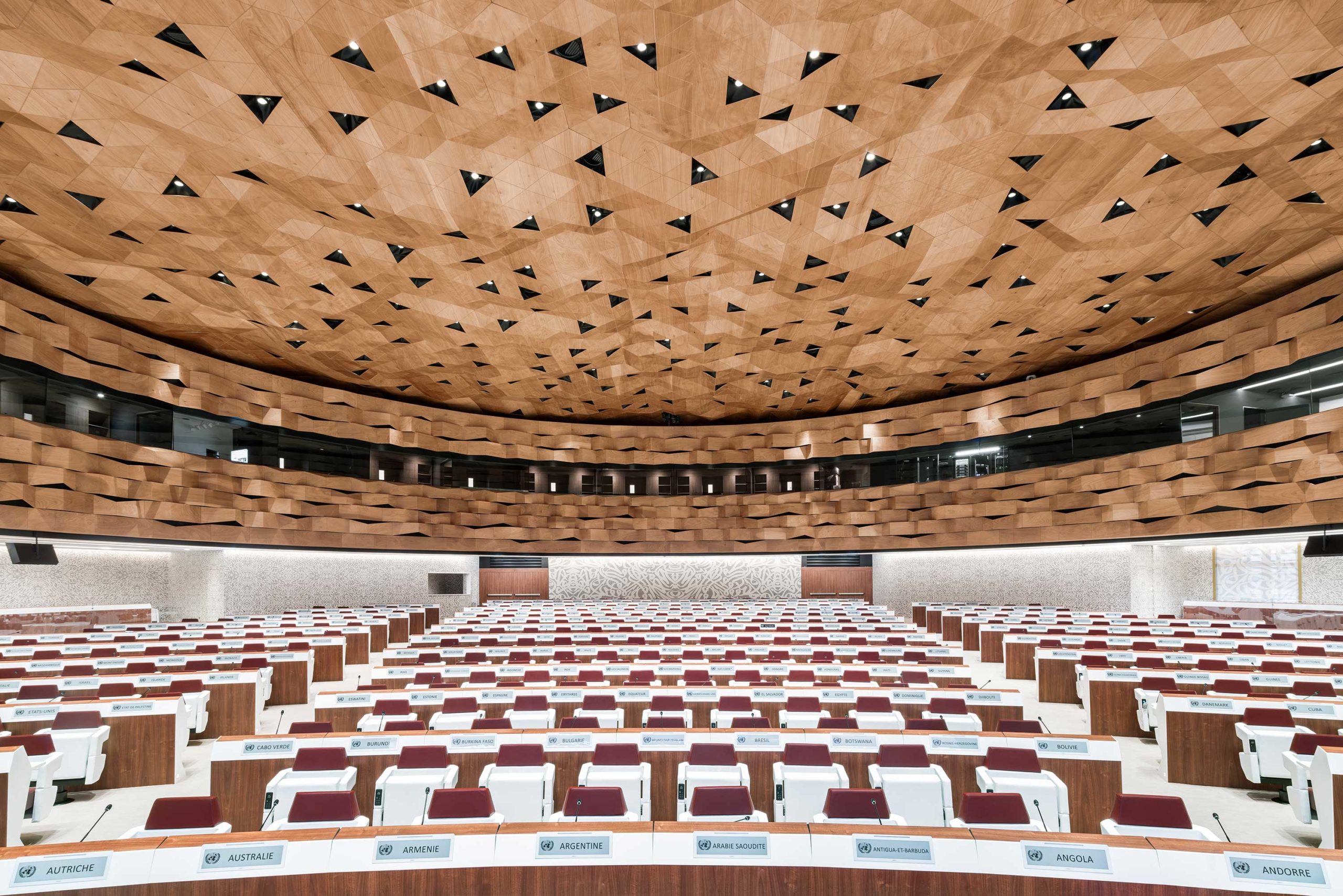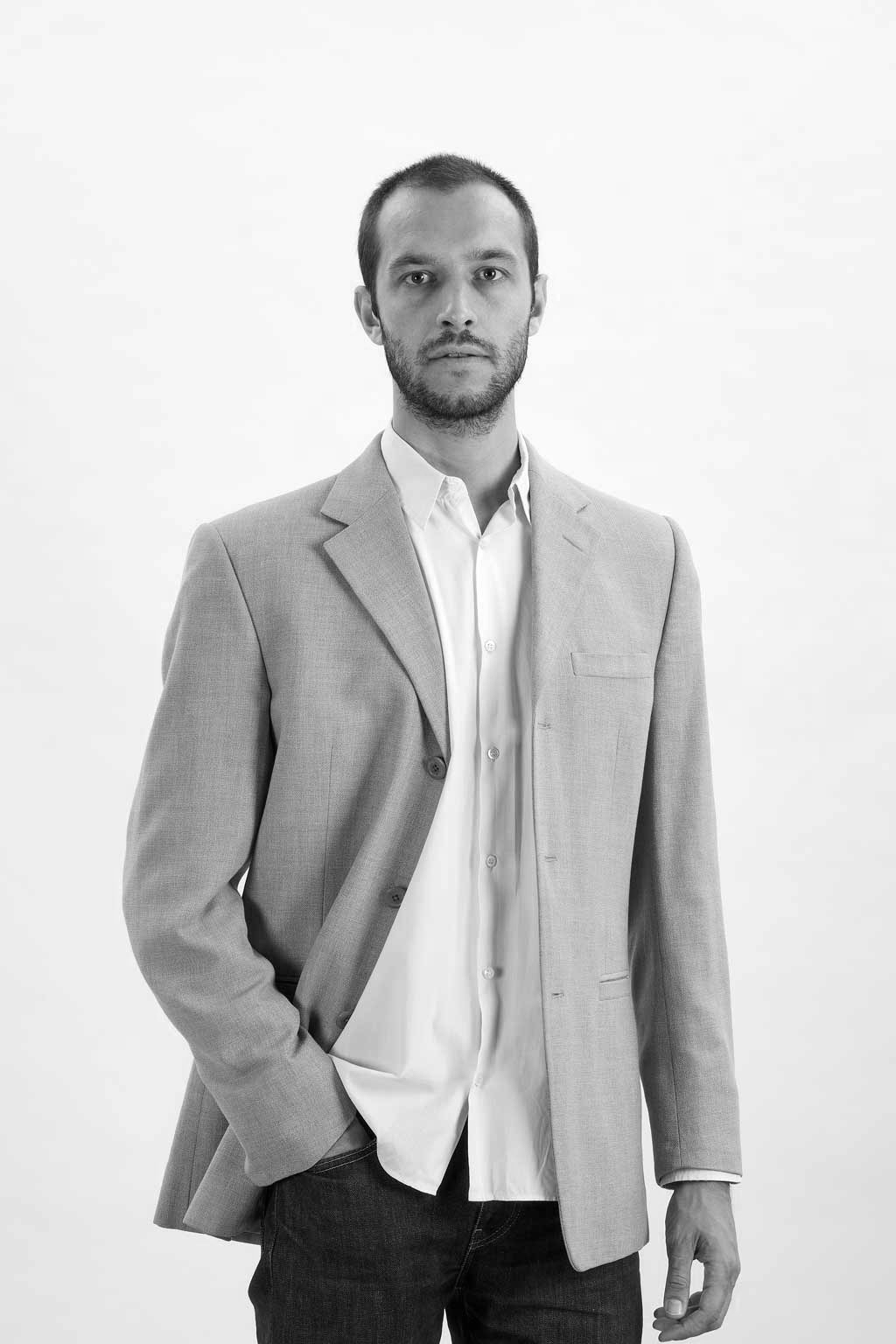WOOD-SKIN is a Milan-based fabrication company that transforms flat surfaces and materials into complex 3D compositions. Using a patented material and manufacturing process, the company has been providing tailor-made wall and ceiling assemblies to architects and designers for the last decade. Due to a recent distribution partnership with Carnegie Fabrics, the company has expanded its presence in North America.
This week, AN Interior sat down with WOOD-SKIN CCO and co-founder Giulio Masotti to explain the technological innovation behind the product and discuss his ambitions for the growing company.

Sophie Aliece Hollis: What is WOOD-SKIN?
Giulio Masotti: WOOD-SKIN is a composite material with two layers of rigid materials that sandwich a layer of textiles. When we mill the surface on top and bottom but leave the textile intact, we’ve basically transformed the surface from flat to three dimensional. Technically speaking, you’ve transformed a stiff flat surface into a semi-rigid membrane that behaves more like fabric. This enables architects to use and think about rigid materials in a completely different way. Over the years, we’ve learned so much from architects in terms of possibilities for the product as they continue push it to its limits with their designs.
SAH: How did you come up with the idea for WOOD-SKIN?
GM: At my previous studio, Mammafotogramma, I was asked by a good friend of mine to design an interior climbing gym in Montreal. Their idea was to bring structures from nature indoors—tree trunks, canopies. We quickly realized that with today’s fabrication technology, it’s difficult to build these naturally occurring, complex shapes. This exploration and finding presented a challenge that we were interested in taking on, and it basically laid the foundation for today’s WOOD-SKIN technology. It’s a huge pain for architects to design and build these shapes without proper technology and streamlined manufacturing processes. That’s where we come in.

SAH: When did you launch the product?
GM: In 2014, we participated in Milan Design Week at an exhibition for young designers that took place in a neighborhood on the outskirts of the city. We presented a system of metal wireframe cubes from which WOOD-SKIN was suspended. It looked very much like a piece of clothing, a textile floating in air, very light. It got people interested and ended up leading to a couple of projects, which, although small, were huge to us at that point in time.
SAH: How many people were you then? How big is the company now?
GM: At the time, we were just an informal group of three friends. Today, we are at about 30 people between our central facility and our R&D department.
SAH: What is the turnaround time on a project with WOOD-SKIN?
GM: Anywhere from six to 12 weeks. Each solution is tailor-made. We almost act as an extension of the design team, working very closely with all the engineers and consultants to enable these complex interfaces with a highly automated industrial process. Instead of relying on artisans, we rely on a patent industrialized process that guarantees lead time. And, of course, quality and repeatability.
SAH: Can you talk about this technology? What is the patented process?
GM: The patent for WOOD-SKIN is a process patent made up of three components: software, composite material, and machining. We start with the software, which uses proprietary technology as well as Grasshopper to create a parametric workflow. Our team builds out digital 3D models, and our software works to transform those into a complex network of buildable shapes. When the design is done, we create a direct file-to-machine process that removes any need for human labor. A CNC machine mills the composite material, which can be shipped in its flat state to save on transportation costs.

SAH: Where does the wood in WOOD-SKIN come from?
GM: It’s normal plywood that we source from responsible forestry plants in Europe, mostly Italy, Finland, and Norway. We work with a network of trusted suppliers that practice the technique of reconstituted wood. It’s a crazy process, it’s very old, but it’s also very sustainable. A thin layer of wood veneer is harvested from fast-growing trees in very controlled forests. By mixing and dyeing the layers with colors, you can recreate the look of other wood species. This practice also allows us to centralize our sourcing to a few trusted, sustainable farms and not require harvesting all over the world. You can have all the sustainability certifications you want, but if your business model is based on a scheme of worldwide mass production, then it’s going to be very hard to maintain your sustainability standards.
We’re trying to create a company where we only produce what is needed. Working with trusted network of local suppliers allows us to maintain this aspect. Although our business is global, we keep these processes local: Our production facility is just 40 minutes outside of Milan.
SAH: Do you all have any other exciting projects on the horizon?
GM: Yes, too many. I should do less. Before summer, we’re going to release an entirely new collection of products that focus solely on acoustics. They’re not panels or surfaces, they fall somewhere between large acoustic objects and acoustical systems. We’ve also been developing a digital configurator for our websites that architects, or just about anyone, can use to play around with designs, materials, and even start to specify WOOD-SKIN.
SAH: It’s been almost a decade since your big debut at Milan Design Week. Do you have anything planned for this year?
GM: Yes, we’re doing a collaboration with a very beloved designer who I cannot yet name. We’re working with him to build a large sculptural composition of fully biobased WOOD-SKIN.
Today, we use synthetic textiles. Although we have a take-back policy where we can recycle this material after the lifecycle of the product is over, our goal is to achieve a fully biobased version of WOOD-SKIN where the wood is not reconstituted plywood, but just hardwood with a highly resistant cotton textile, held together by natural glues made from muscles.

SAH: Is there a project that you’ve worked on that you are particularly proud of?
GM: One of our largest projects to date was the ceiling in the XIX Room of the United Nation in Geneva. This was exciting not only because of where it is (I see our work on television every few days when some momentous bill is being signed or disputed), but also because it had absurd technical requirements. The assembly had to withstand earthquakes and blasts and be able to support heaps of technical equipment, including heat sensors and cameras. It was madness. But it really proved to us the potential that WOOD-SKIN has and we’ve since embarked on more and more of these complex projects that would have been unthinkable just a few years ago.
I am extremely passionate about these technical details and challenges. We’re always working to figure out how to build sustainably, not just from an environmental standpoint, but also in terms of labor. To this day, we build inefficiently. We typically still build the same way we did 100 years ago, which is kind of an embarrassment to humanity. So, in our small niche, we are working hard to change the game by updating these dated building techniques for the digital era so we can offer professionals an alternative when designing spaces.
